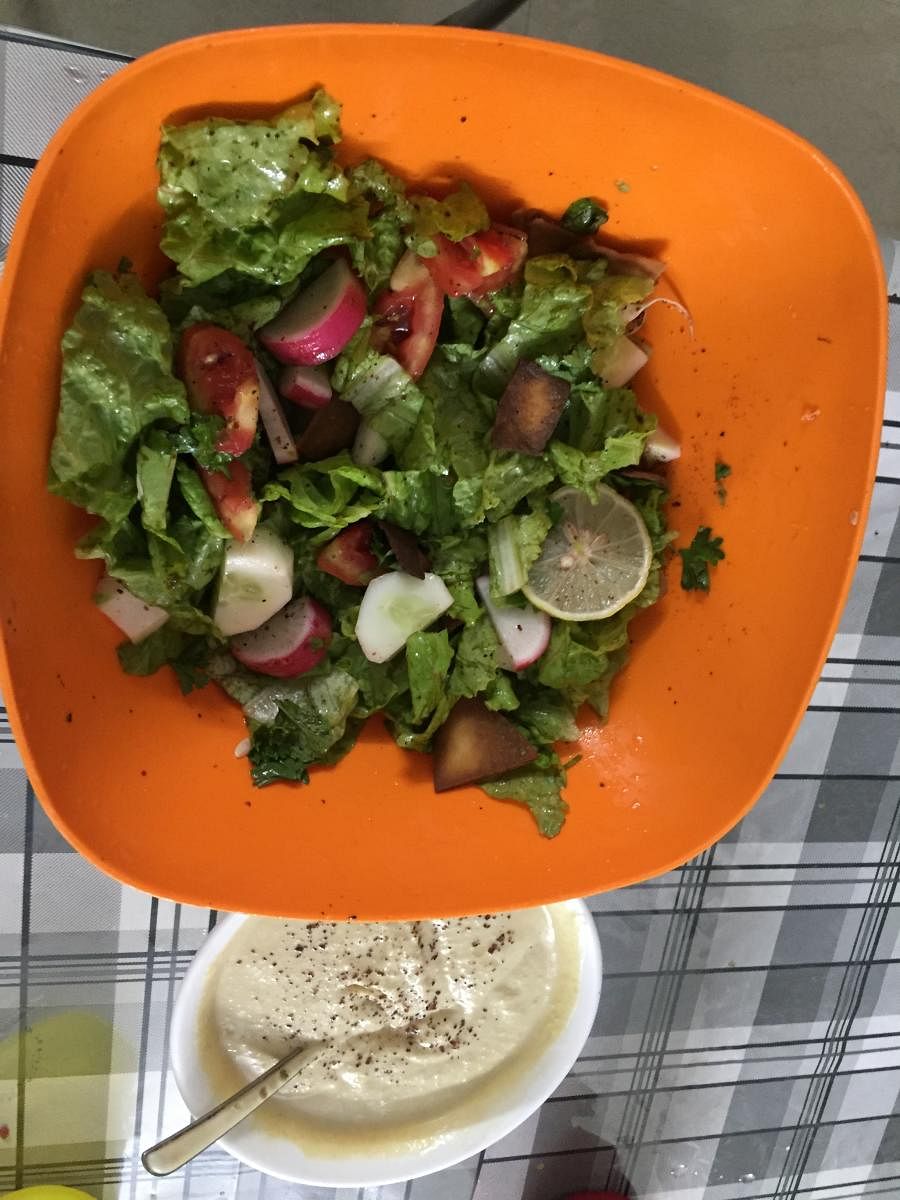
It was after eating the refreshing fattoush salad first time in Muscat (Oman) that I discovered sumac (sammak in Arabic) that provided a pleasant lemony kick to my all-time favourite salad. I was wondering what could be the powdered dark red seasoning. Now, sumac is used often in our kitchen to rustle up dishes that require an element of lemony goodness.
Culinary history tells us that the Arabian Peninsula has been closely linked with spices. The Arabs had a virtual monopoly over the spice trade for a long period of time. Spices were an intrinsic part of the diet everywhere in the Middle East for their fragrances and their medicinal properties, as well as for their enhancement of flavour in food. Arab cooks mastered the art of flavouring, using a multitude of spices in each dish to create a taste which is rich and subtle, never overpowering but beautifully enhancing the taste of the food.
Though sumac is not a standard spice in the traditional Arabian dishes yet, its use in some preparations is appreciated. Mention about sumac can be found more than 2,000 years ago in the writing of Pedanius Dioscorides, a Greek physician serving in the Roman army, as having healthful properties. Dioscorides says it was “sprinkled among sauces” and mixed with meat. The flowery sumac berries grow on a shrub called Rhus Coriaria. This plant typically grows in high plateau pockets of the Mediterranean. Sicily, with its wild, rocky topography, is especially known for growing these tasty tiny berries. Sumac also grows in Turkey and Iran. The whole fruit appears in dense clusters. Individual berries are small, round, russet coloured and covered with hairs. The berries are sun dried and pounded to form a coarse purple-red powder which is sour, fruity and astringent.
A simple zesty vinaigrette and a generous dash of sumac spice give fattoush its distinctly complex flavour while hummus gets its punch from light sumac seasoning sprinkled on top. Sumac tastes especially good on grilled fish and meats and also on many other salads besides fattoush. For instance, tabouleh spiced with sumac is fantastic. While having a diverse flavour profile, sumac still blends exceptionally well with other spices such as allspice, chilli, thyme, and cumin. One of the most common spice blends sumac can be found in is Za’atar. In Turkey and Iran, sumac is often put on the table in shakers or bowls, especially in kebab houses, and is used like salt and pepper. Like most spices, sumac berries possess diuretic properties and are used in bowel complaints and for reducing fever. In the Middle East, a sour drink is made from them to relieve stomach upsets.